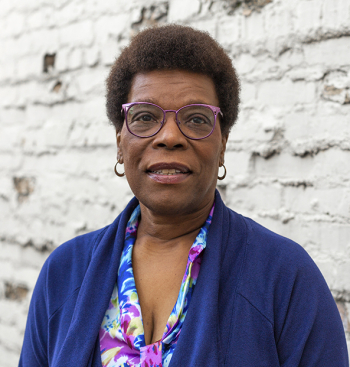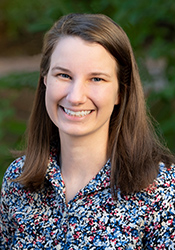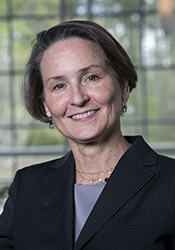Environmental Inequities: Duke Law’s work on the disproportionate burden of waste
Duke Law’s Environmental Law and Policy Clinic explores the unequal burdens of where trash ends up
 Sherri White-Williamson
Sherri White-Williamson
Growing up in Sampson County, North Carolina, Sherri White-Williamson remembers a farming community that gradually developed into a major industrial center, with some of the country’s largest poultry and pork operations and the attendant problems with agricultural waste. Now, the adjunct professor at Duke’s Nicholas School for the Environment is working in her home county fighting a different environmental battle—quality of life issues related to the Sampson County Regional Landfill.
“The community is really suffering in a lot of ways,” said White-Williamson, executive director of Environmental Justice Community Action Network (EJ CAN), an organization she co-founded to help communities get relief from the human and environmental damage caused by industry in Sampson County.
The landfill started as a 15-acre site in 1973, White-Williamson said. Today, at more than 1,000 acres, it is North Carolina’s largest regional dump site, receiving about 250 truckloads of waste per day from dozens of counties, including Durham County some 90 miles away.
For years, the landfill has emitted large amounts of methane from decomposing trash, according to EPA data on greenhouse gas emissions from waste facilities. The water, including wells which provide drinking water, is contaminated by toxic pollutants called PFAS, also known as “forever chemicals.” White-Williamson says recent water testing at one residence showed 8,000 times the EPA’s recommended limit of PFAS.
“It's economic, it's health, it's just quality of life generally,” White-Williamson said. “I describe it as peeling back the layers of an onion. You think you've got the answer to this thing, and in answering that, you find something else that you've got to find a solution to if you can.”
Duke Law clinical professor and Environmental Law and Policy Clinic co-director Michelle Nowlin says this is exactly the type of inequity the clinic is hoping to help solve. “It’s just abominable. This is a huge environmental justice problem.”
The location of toxic facilities near minority communities is no accident. A 2007 study found North Carolina communities where people of color made up more than half the population were nearly three times more likely to have a solid waste facility than those with less than 10% people of color. Later studies also found correlations with the racial composition of areas where toxic waste facilities were located.

“Multiple communities, including Durham, are dumping all their waste on this community that because of Jim Crow era segregation was unincorporated and didn't have the ability to fight off a noxious land use that nobody wants next door to them. It was sold as a benefit,” Nowlin said. “Now they can't go outside, and they can't sell their homes because who wants to live next to a landfill? Whatever wealth that community had developed has been taken away from them.”
As part of the clinic’s work on waste management in Durham, Duke students canvassed city streets using a litter index developed by clinic staff scientist Dr. Nancy Lauer. Layering demographic and economic information over their map of highly littered areas, they found a complete overlap with historically “redlined” areas – where residents had been denied home loans and other resources due to their race.
“As we started digging more, we realized that that pattern was replicated in other places,” Nowlin said. “When we look at the pattern of where trash is sent, to communities of color, health problems are among the severe environmental justice impacts visited on communities that are host to all these landfills. That’s why we think that this is so important and why we're devoting so many resources to addressing the problem.”
Ongoing problems requiring ongoing work
While EJ CAN isn’t currently a client, the clinic partners with the organization in Sampson County, where several cases involve environmental inequities.

“We address an environmental justice component in every single one of our cases, whether it’s hog waste or plastics,” Nowlin said. “There are lots of things our students are concerned about that that organization is working to redress, so it would be really lovely to work with them.”
Last year the Sampson County landfill’s owner agreed to a settlement with EJ CAN that will help mitigate some of the harms of the landfill. Next, White-Williamson hopes to collect and compile statistical data on chronic disease and death in the community. There is plenty of anecdotal evidence, she said, but a health impact analysis documenting the effects of living in a toxic zone will help make the case for further relief – and serve as a model for other communities fighting environmental inequities.
“Up until EJ CAN started working with the community, there had not been any effort to do any kind of data collection or analysis or anything to tell exactly what the impacts were for many folks living in some of these communities,” she said.
Nowlin noted there is rarely a final resolution to matters of environmental justice.
“We're not going to get rid of plastics; we're not going to get rid of large-scale agricultural operations. So it's a process of continually educating yourself about the emerging science and thinking creatively about different policy and legal interventions, ways of educating the public, and ways of working with businesses and commercial entities to change practices to reduce those burdens. It's a constant battle – and a constant source of renewal and potential.”